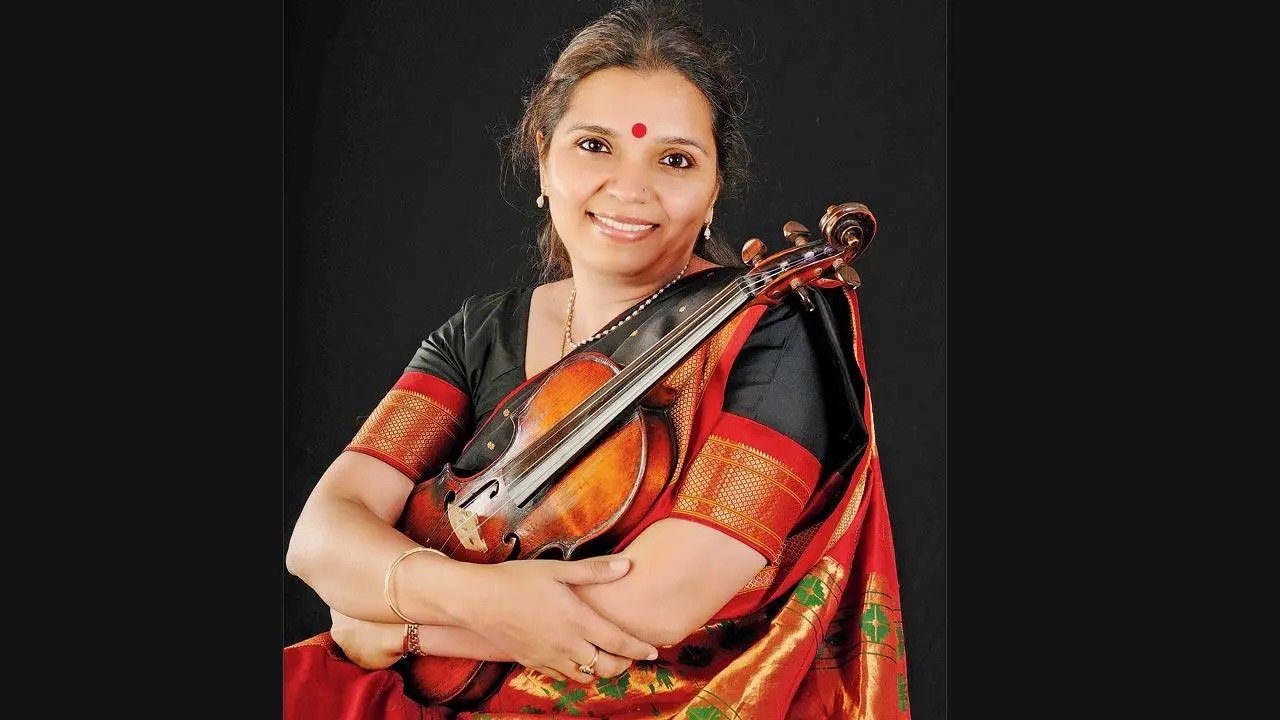Chacha Chaudhary of violinists - Midday
Chacha Chaudhary of violinists
Aastha Atray Banan | aastha.banan@mid-day.com
One of India’s foremost Indian classical violinists, she belongs to the Mewati gharana, and has performed and studied with Mewati vocalist, the Pandit Jasraj for 20 years
Pandit Jasraj used to call me a computer because I picked up everything so easily. He told me something once, and the bandish was embedded in my head,” Kala Ramnath tells us with childish enthusiasm over a Zoom call from California. Ramnath plays bandishes on a violin. One of India’s foremost Indian classical violinists, she belongs to the Mewati gharana, and has performed and studied with Mewati vocalist, the Pandit Jasraj for 20 years. These days, she performs as part of Triveni, with tabla legend Ustad Zakir Hussain and veena maestro Jayanthi Kumaresh.
Be it the honour of being the first Indian to be featured in the violin bible The Strad, or being part of the Grammy-nominated Miles from India project, Ramnath’s list of accomplishments is long. Next month, she performs at the Royal Albert Hall, interpreting Mexican painter Frida Kahlo’s works, and there’s also a concert at the World Harp Congress. She may have been playing the instrument since she was a toddler, hailing from a family of illustrious violinists such as T N Krishnan and N Rajam, but when talks of her beginnings, it all feels like it happened just yesterday.
“I was always very serious about music,” the 55-year-old recalls fondly. “My grandfather, Narayan Iyer, would tell me to repeat a [musical] exercise 100 times. If I made a mistake the 99th time, I would have to start all over again. And I didn’t mind; I never complained. If I made it to 100 without making an error, he would get me some kheer.” A family of artistic temperaments also meant that she and her art were given importance over daily household matters. “When I was practicing, the pressure cooker couldn’t be on the stove, nor could my mother switch on the water pump—it was too noisy. I didn’t demand all this, it was taken care of. Everything revolved around me..,” she says.
At 19, when she got an A-grade at All India Radio, which bestows grades that helps organisations across the world assess the merit of musicians, that is considered the pinnacle of prestige for classical music, her then-90-year-old grandfather broke down. “He would wake me up [even] at midnight, if he had an idea [for a composition], to tell me. He knew my brain would work it out for sure. He said that I challenged him. ‘You have given me the greatest satisfaction as a guru,’ he would say. When I think back, maybe this is why Pandit Jasraj also called me a computer.”
What is the life of a travelling musician like? Especially one bearing the heavy burden of taking Indian classical music to the world, when even most Indians are at a loss about its rich history? Ramnath says she keeps her life as normal as she can, and is glad she never gets mobbed. What does surprise her every time she performs is that there are fewer Indians in the audience and more foreigners. “Bollywood performers draw an Indian audience,” she says. “Ours is 95 per cent non-Indian, and 4 per cent Indian. When I worked with the Seattle symphony, the 4,000-seater hall had only 20 per cent Indians.”
This could be the reason behind her project indianclassicalmusic.com, which documents a music form passed down from guru to shishya through the spoken word. “Whatever was documented was destroyed by invaders,” she says. “And many things in classical music can’t be documented, like the micro tones, which connect one note to another. Western music doesn’t have that. So I am trying to put together videos to explain all I can. There were 5,000 ragas at the beginning of this ancient form, now there are barely 500; and only 100 are in circulation. We need to preserve our culture.”
For now, she has two packed months ahead of her. But as she says, even at her busiest, she remains a student. After her concerts at the Royal Albert Hall, she will be back with Triveni. “Performing every day with Zakir Husain is a lesson for me. He taught me about music. For example, we play tihais (repeating the same phrase), so he taught me how to make each repetition different, like maybe in a different octave. Even watching how he prepares for a concert—he irons his clothes as meditation—was a revelation to me. The desire for knowledge never ends...”

